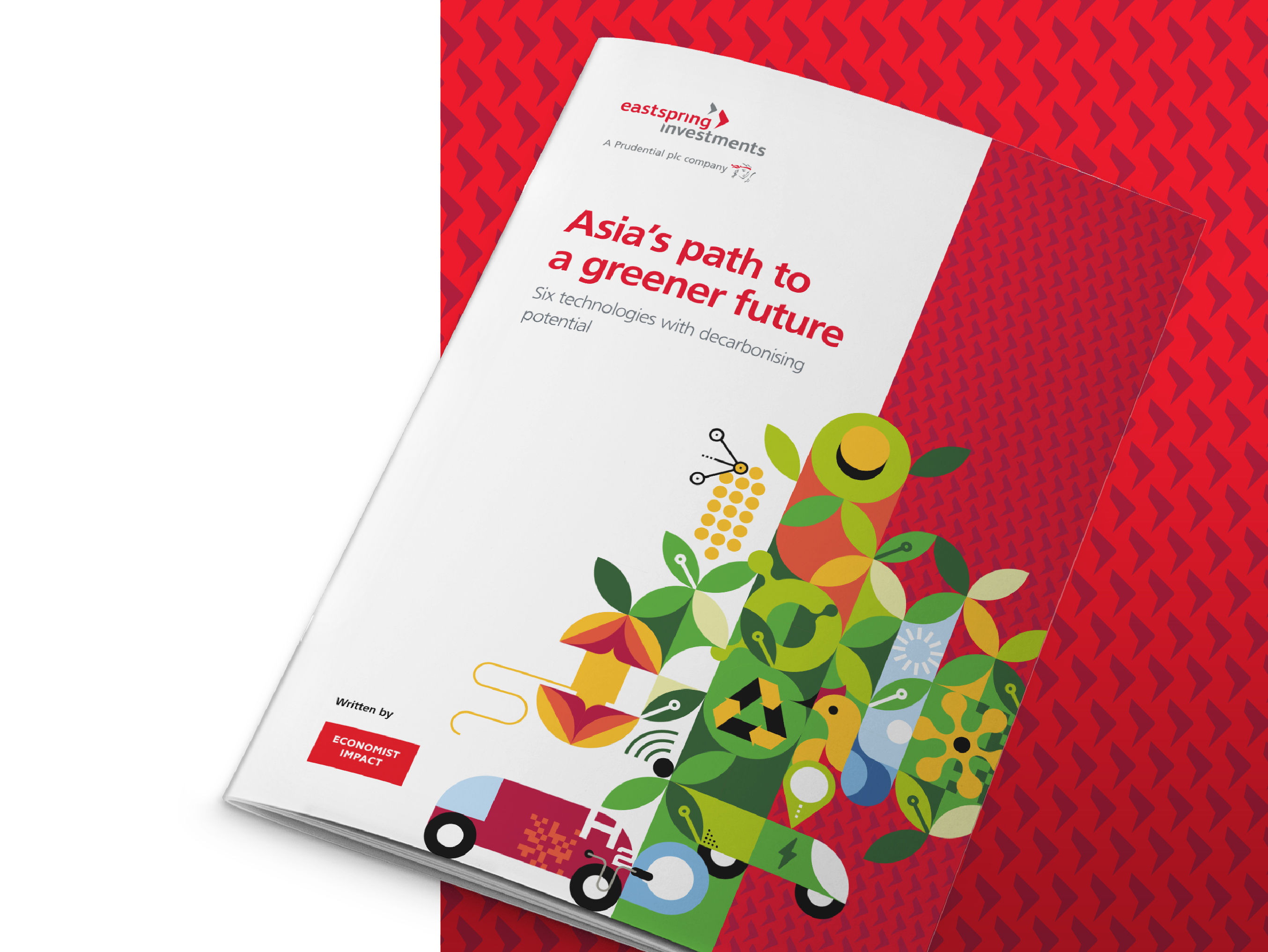Executive summary
Asia, home to vast engines of economic growth, is at the centre of the climate debate. In the past two decades, global carbon emissions from fossil fuel combustion have risen by 45%, primarily driven by Asia, for which this figure stood at 135%.1 The region’s ongoing dependence on coal has driven its per-head carbon emissions to equal that of the global average.2 Looking ahead, Asia’s carbon emissions are likely to rise by a further 16% over the next decade.3
Meanwhile, the effects of climate change are becoming more pronounced in parts of the region. In the past year, unprecedented floods in Pakistan wiped out a significant share of its crops;4 India recorded its highest-ever temperatures, with meteorologists sounding the alarm for more to come this year;5 and a severe heatwave in China exacerbated a drought that impacted food production and the power supply.6
The continent is facing significant human and economic costs arising from intense greenhouse gas emissions. Under pressure to set ambitious net zero targets and reduce emissions, technologies that enhance efficiencies and help industries decarbonise will be crucial pieces of the climate puzzle in Asia.
Asia’s path to a greener future: six technologies with decarbonising potential was written by Economist Impact and sponsored by Eastspring Investments. The report explores six promising technologies that can support the region’s journey to a cleaner, greener future.
The report’s findings are intended to act as a springboard for discussions to support the development of technologies that have decarbonising potential and identify the roadblocks to their progress.
Key findings:
- Technologies that are driving significant gains in Europe or the Americas need to be adapted to the Asian market.
Small-scale farmers, who comprise a significant majority of Asia’s agricultural sector, face fundamental challenges like access to credit and market. This impedes their ability to prioritise the adoption of precision farming solutions that enable better yields with fewer resources. The majority of alternative protein products are tailored to suit Western preferences and are prohibitively costly for the more price-sensitive Asian market. Alternative proteins would likely see broader adoption and create more impact if adapted to specific market preferences and price conditions.
- Decarbonisation efforts should aim to address
emissions and waste across the entire lifecycle
of production and use.
Most of the hydrogen currently consumed is grey. The decarbonisation potential of hydrogen-powered vehicles will significantly increase with the use of renewable energy to produce hydrogen fuel. Likewise, using food waste for manufacturing textiles moves away from the current highly polluting linear model of production to a circular economy.
- Developing supporting infrastructure can
enhance technology development.
The growth of technologies such as hydrogen vehicles and battery recycling is currently limited due to insufficient supporting infrastructure. Spurring hydrogen vehicle uptake depends on installing a network of refuelling stations and green hydrogen production plants. To diminish end-of-life impacts of batteries, well-designed and managed disposable and collection mechanisms are necessary. Implementing policies that support the development of necessary infrastructure will ensure a conducive environment for the growth and expansion of these technologies.
- Addressing consumer sentiment will be key in
scaling up technologies.
Negative perceptions impede new technology adoption. In the case of alternative proteins, consumers can be deterred by concerns about taste and nutritional value. With hydrogen vehicles, safety is a key issue, while recycled batteries are sometimes perceived as lower quality. Investigations can help curb these concerns around safety where needed. In other cases, public awareness and better communication by businesses and governments can go a long way to address common misperceptions.
- Recycling and reuse can present opportunities
to overcome supply chain disruptions owing to
changing global dynamics.
The prices of critical minerals are on the rise because of growth in demand and fluctuations in supply. Recycling products, such as electric vehicle (EV) batteries, could ease the dependence on expensive raw materials, improve affordability and facilitate the transition away from a linear take-make-waste economy.
- Policy support in the form of subsidies and
financial incentives can reduce technology costs.
At present, many new technologies are expensive, which is hindering their adoption and development. Government support through subsidies, grants and other financial incentives can help reduce production costs and enable economies of scale. Lower production costs could translate into lower purchase prices for end consumers and foster greater adoption.
- Greater public and private investments are
needed.
All the technological areas assessed in this research require more funding, which will, in turn, result in cheaper innovations that can address challenges specific to the region. Funding is also needed to help install essential infrastructure to support the uptake of climate technologies such as hydrogen production plants and EV charging stations.
This is a summary of the report. Please click here to read the full report.
Sources:
1 Global Carbon Atlas. “Emissions”. http://www.globalcarbonatlas.org/
en/content/welcome-carbon-atlas
2 Ritchie, H, Roser, M & Rosado, P. “Per capita CO2 emissions”. Our
World in Data. 2020. https://ourworldindata.org/co2-emissions
3 Economist Intelligence Unit forecast.
4 Syed Raza Hassan. “First heat, then floods wipe out farms in Pakistan’s
chilli capital”. Reuters. November 2022. https://www.reuters.com/
business/cop/first-heat-then-floods-wipe-out-farms-pakistans-chillicapital-2022-11-02/
5 Karishma Mehrotra. “High February temperatures have India already
bracing for more heat waves”. The Washington Post. February 2023.
https://www.washingtonpost.com/world/2023/02/20/india-heat-waveclimate-change/
6 Srinivas Mazumdaru and Jose Qian Shanghai. “Drought, power
cuts worsen China’s supply snarl”. DW. August 2022. https://www.
dw.com/en/drought-and-power-shortages-worsen-chinas-supply-chainsnags/a-62928037
Singapore by Eastspring Investments (Singapore) Limited (UEN: 199407631H)
Australia (for wholesale clients only) by Eastspring Investments (Singapore) Limited (UEN: 199407631H), which is incorporated in Singapore, is exempt from the requirement to hold an Australian financial services licence and is licensed and regulated by the Monetary Authority of Singapore under Singapore laws which differ from Australian laws
Hong Kong by Eastspring Investments (Hong Kong) Limited and has not been reviewed by the Securities and Futures Commission of Hong Kong.
Indonesia by PT Eastspring Investments Indonesia, an investment manager that is licensed, registered and supervised by the Indonesia Financial Services Authority (OJK).
Malaysia by Eastspring Investments Berhad (200001028634/ 531241-U) and Eastspring Al-Wara’ Investments Berhad (200901017585 / 860682-K).
Thailand by Eastspring Asset Management (Thailand) Co., Ltd.
United States of America (for institutional clients only) by Eastspring Investments (Singapore) Limited (UEN: 199407631H), which is incorporated in Singapore and is registered with the U.S Securities and Exchange Commission as a registered investment adviser.
European Economic Area (for professional clients only) and Switzerland (for qualified investors only) by Eastspring Investments (Luxembourg) S.A., 26, Boulevard Royal, 2449 Luxembourg, Grand-Duchy of Luxembourg, registered with the Registre de Commerce et des Sociétés (Luxembourg), Register No B 173737.
Chile (for institutional clients only) by Eastspring Investments (Singapore) Limited (UEN: 199407631H), which is incorporated in Singapore and is licensed and regulated by the Monetary Authority of Singapore under Singapore laws which differ from Chilean laws.
The afore-mentioned entities are hereinafter collectively referred to as Eastspring Investments.
The views and opinions contained herein are those of the author, and may not necessarily represent views expressed or reflected in other Eastspring Investments’ communications. This document is solely for information purposes and does not have any regard to the specific investment objective, financial situation and/or particular needs of any specific persons who may receive this document. This document is not intended as an offer, a solicitation of offer or a recommendation, to deal in shares of securities or any financial instruments. It may not be published, circulated, reproduced or distributed without the prior written consent of Eastspring Investments. Reliance upon information in this document is at the sole discretion of the reader. Please carefully study the related information and/or consult your own professional adviser before investing.
Investment involves risks. Past performance of and the predictions, projections, or forecasts on the economy, securities markets or the economic trends of the markets are not necessarily indicative of the future or likely performance of Eastspring Investments or any of the funds managed by Eastspring Investments.
Information herein is believed to be reliable at time of publication. Data from third party sources may have been used in the preparation of this material and Eastspring Investments has not independently verified, validated or audited such data. Where lawfully permitted, Eastspring Investments does not warrant its completeness or accuracy and is not responsible for error of facts or opinion nor shall be liable for damages arising out of any person’s reliance upon this information. Any opinion or estimate contained in this document may subject to change without notice.
Eastspring Investments companies (excluding joint venture companies) are ultimately wholly owned/indirect subsidiaries of Prudential plc of the United Kingdom. Eastspring Investments companies (including joint venture companies) and Prudential plc are not affiliated in any manner with Prudential Financial, Inc., a company whose principal place of business is in the United States of America or with the Prudential Assurance Company Limited, a subsidiary of M&G plc (a company incorporated in the United Kingdom).













